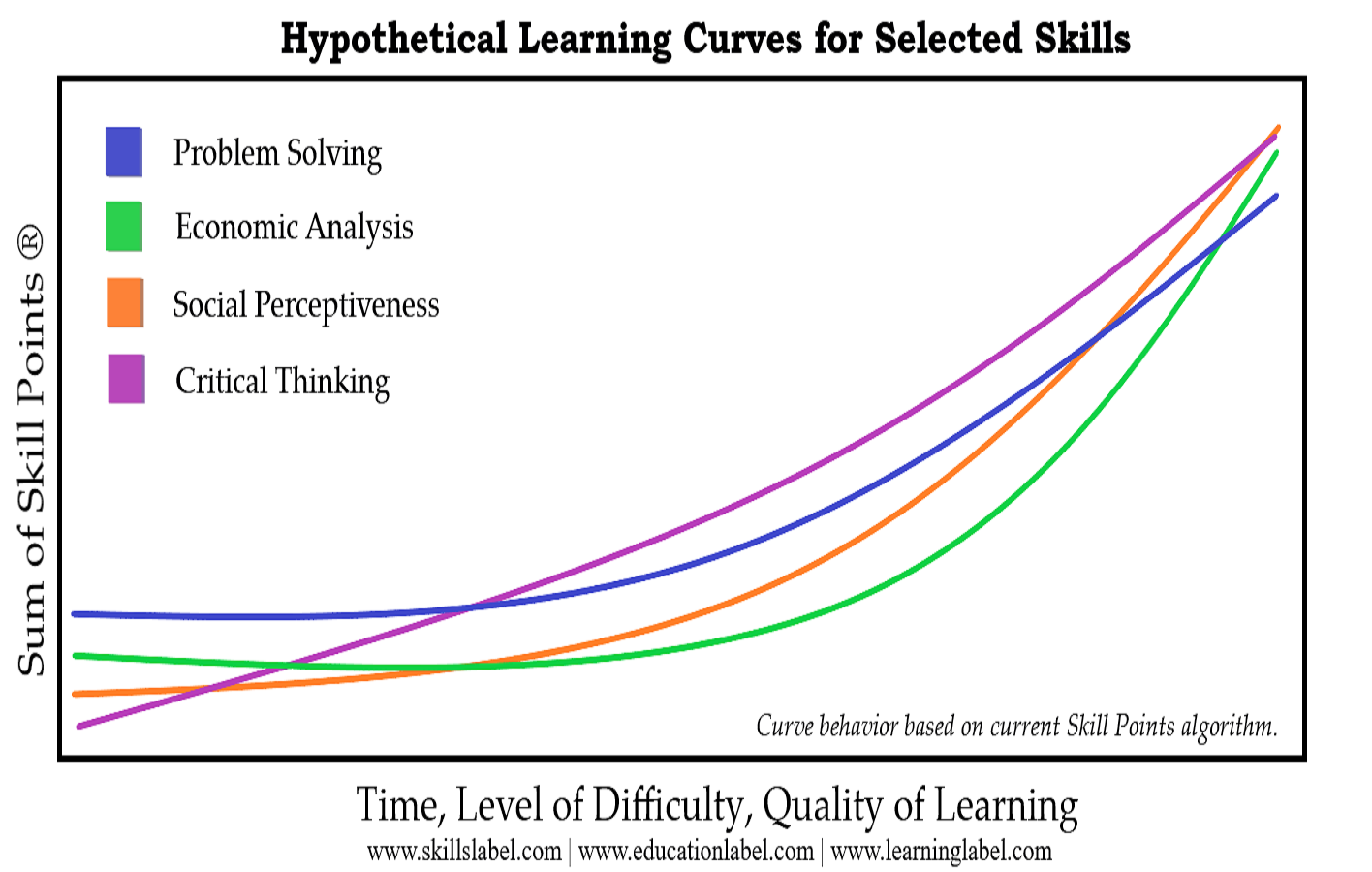I developed an algorithm to calculate numerical learning gains based on skills (Skill Points ®). To take this to the next generation (2.0), improve the algorithm to include a coefficient (growth rate) for each skill (on a skill by skill basis). I started to think how to accomplish this and below are some of the seed ideas. The assumption is we are using the learning labels technology as a standard representation of learning expectations for tasks or experiences – where Skill Points® are derived.
Time longitude study (analogous to taking the CLA+ before and after college)[i]. Track learning in skills (methods and applications and standards) with a collection of users through time. The groups should represent different stages of learners (education, higher education, and professional development). Take periodic assessments. Aggregate the results. Construct coefficients based on the results.
Use current curriculum and credit hour system. Define current learning plans and curriculum in skills (methods and applications and standards). Use current credit hour system and other ways to measure progress. Construct coefficients based on time, skill, and achieving skills levels.
Use human learning starting from scratch. Use -pre, -during, and -post assessments to measure how a learner improves in learning skills in a task or experience. Aggregate the results: match skill to time, level of difficult, and type (quality) of the learning experience.
Use machine learning / AI starting from scratch. Use -pre, -during, and -post assessments to measure how a system improves in learning skills in a simulated task or experience. Take the results: match skill to time, level of difficult, and type (quality) of the learning experience.
These methods are not mutually exclusive. The advantage of the first two methods is they can be started right away. For the longitude study, start once the study is designed. For the curriculum mapping, start mapping a curriculum or learning program. The last two methods require a database of learning labels and the ‘human learning’ requires a healthy number of users in the system.
My recommendation is to start the first two methods. Build a longitude study for the basic thinking and soft skills; identify students and implement the study (expecting to see results covering a few years). Start mapping curriculum to skills using the learning labels technology. Use the results to get competencies based on the traditional higher education credit hour system (something we want to move away from, but gradually). Value in this mapping skills to learning is it also applies to mapping skills to jobs and professions.
The idea of numerical learning gains (Skill Points®) is a convincing feature of the learning labels technology. Building them through education, higher education, and a career connects these stages together.
Contact me at ryan@skillsbasedapproach.com if you are a learning practitioner or institution or potential partner and what to be part of this project.
[i]Academically Adrift. Book includes study of college students taking the CLA+ at different stages in higher education.
